Menus
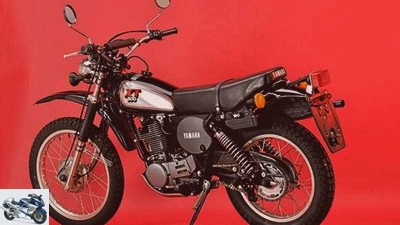
Sdun
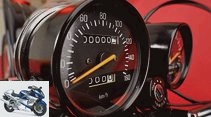
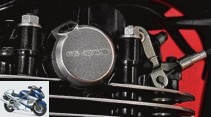
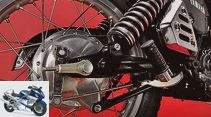

9 photos
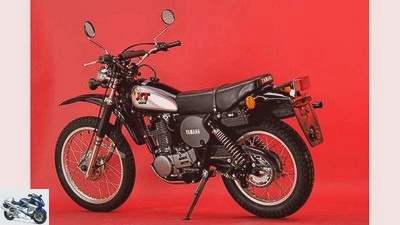
Sdun
1/9
Yamaha XT 500 S..
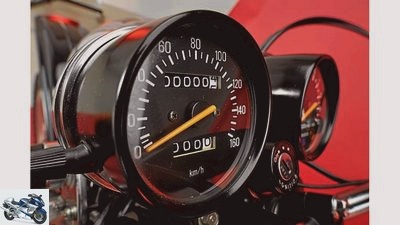
Sdun
2/9
The speedometer shows just under 500 meters. And every single one of them is pushed honestly!
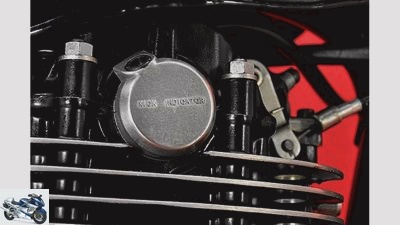
Sdun
3/9
Real men don’t (don’t) need the kick indicator.
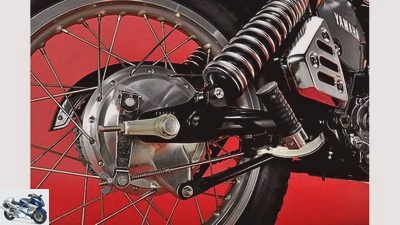
Sdun
4/9
Chrome-plated or bare metal wherever you look.
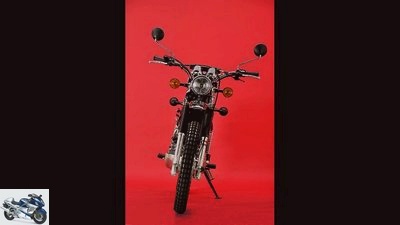
Sdun
5/9
Not a superfluous gram disturbs the slim silhouette of the Yamaha. The XT’s Trail Wing tires even have studs on them.
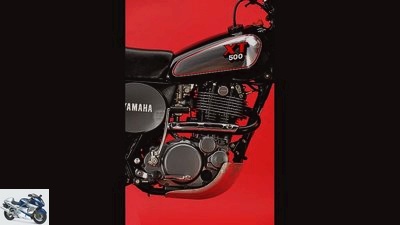
Sdun
6/9
Single cylinder in its most beautiful form. The XT engine also powered the SR 500 built from 1978 to 1999, almost unchanged.
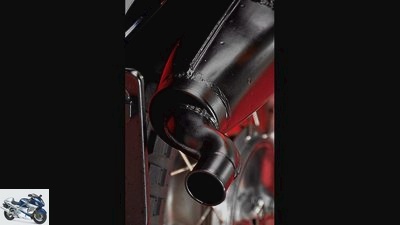
Sdun
7/9
The “S” snorkel on the exhaust came to German XTs in 1978.
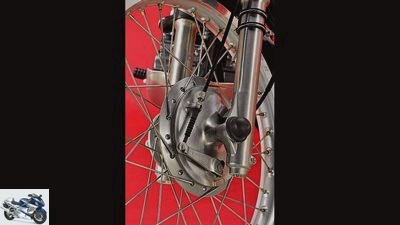
Sdun
8/9
The “S” is not stingy with bare metal at the front either.
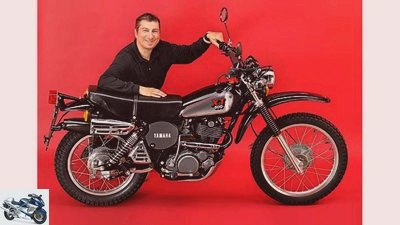
Sdun
9/9
“When I’m retired, I’ll bring the old lady to life.”
Yamaha XT 500 S.
The enduro classic from Yamaha in the studio
Content of
The enthusiasm for Yamaha’s cult single continues unabated. Many people are today fulfilling the dream of their early motorcycle career, such as the owner of our photo model, a Yamaha XT 500 S in new condition.
"Once upon a time there was a man who stepped on a kickstarter and flew onto the first floor balcony." This is how fairy tales begin. And the first detailed report on that Yamaha XT 500 in MOTORRAD 15/1977. The cliche of the men’s motorcycle was born: the Yamaha XT 500 commands awe of its driver, especially when kicking off the two-wheeled grace.
Buy complete article
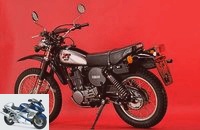
Yamaha XT 500 S.
The enduro classic from Yamaha in the studio
XT 500 long-distance travelers the gateway to the world. Fully packed, it was not only used on the African continent. In 1981, a couple from Cologne who set off for Japan with two new Yamaha XT 500s proved that they were predestined for driving around the world. This trip turned into a psychedelic 16-year trip around the world, which the two of them describe in their book "Crazy" held on.
The single-cylinder enduro Yamaha XT 500 is cult. This is also reflected in the used prices. Even for run-down specimens, proud sums are asked and paid today. The typical owner of a Yamaha XT 500 is between 40 and 50 years old, professionally established and able to fulfill the dream of his motorcycle youth or to continue to live it. Like Sami Hadi, who made his motorcycle available to us for the studio recordings.
The 44-year-old architect is a Yamaha XT 500 rider with heart and soul and has covered over 200,000 kilometers on his XTs. The initial spark for his passion was an encounter at the beginning of the 1980s that burned itself deeply into his memory: with the front wheel shaking, the single-cylinder enduro, booming in idle, stood at a red light. "You could easily have pushed a sheet of paper under the tire, which danced up and down the asphalt like a nervous rubber ball", he describes the scene. "When the driver hit the gas on green, the front wheel didn’t want to go back to the ground. I have been fascinated by this machine ever since and it was clear that one day I would ride such a motorcycle."
When Yamaha rings in the final lap for the Yamaha XT 500 in 1988, Hadi also wanted one. At this point in time he was already riding a 1981 XT as an everyday motorcycle, which he had optimized for Africa with a TT 600 fork and disc brake, a large clean-key tank, longer Bilstein suspension struts and light engine tuning.
Infected by the Yamaha XT 500 virus, he sees the final model as the last chance to get hold of one of the coveted new machines. But the student lacks the necessary capital. Depressed, he vows to buy a virgin Yamaha XT 500 one day. As luck would have it, almost 20 years later he came across his dream while looking for spare parts on the Internet: built in 1989, zero kilometers, daily registration, no test run – absolutely new.
Yamaha lovingly revived this final model at the end of production. The rear springs, heat shields on the manifold and exhaust pipe, lamp pot, lamp holders, dashboard brackets and brake levers reflect the studio light. The motor housing of the Yamaha XT 500 of the last series is in anthracite instead of the classic black; the plastic parts have a bluish sheen "Shiny black".
For the last edition, Yamaha even took the aluminum engine guard out of the parts store and left it unpainted, as did the lower triple clamp, the dip tubes, the brake anchor plates and the hubs on the front and rear wheels. The characteristic aluminum tank of the Yamaha XT 500 also received the blue shimmer paint. Even the kick indicator with the sight glass is made of matt, shiny metal.
The motorcycle was auctioned off by a Yamaha dealer on Ebay, and Sami Hadi struck. "It wasn’t a coincidence", he is sure with a wink. He will probably never part with her again. However, he doesn’t want to bring her to life until he is retired. "Just the right time", thinks Hadi, "to go on tour with a beautiful classic car."
In 14 years of construction, the Yamaha XT 500, with only a few facelifts, mutated into an indestructible long-runner and sold over 25,000 times in Germany alone. Around 9,000 copies still registered speak for themselves today, 35 years after their publication.
Yamaha XT 500 – the chronicle
Yamaha only improved the Yamaha XT 500 in detail, which was particularly noticeable in the different tank designs.
Old
Tank of the Yamaha XT 500 in 1976.
As the Yamaha XT 500 1976 is presented, it is all about the off-road machines popular in America. Of the original model with the manifold guided under the engine, only around 200 made it to Germany.
Old
Yamaha XT 500 tank in 1977.
Nice that 1977he model of the Yamaha XT 500 has the high-lying manifold. In addition, there is the kick indicator on the cylinder head, a 32 mm carburetor, rubber-mounted indicators, a front wheel rim widened to 1.85 inches, suspension struts extended by 25 millimeters, a chain tensioning rail on the swing arm and a reinforced kick starter. The tool box moves from the frame triangle to the left rear side of the Yamaha XT 500. The small, black painted engine protection made of sheet steel replaces a solid sheet of aluminum.
Old
Yamaha XT 500 tank in 1978.
From 1978 Bellows protect the standpipes, which are now fastened at the top with a double clamp. Larger cooling fins improve the thermals, and a new plastic chain guard protects the chain. The notches and brake pedal are also changed, and the exhaust has an S-shaped connector.
Old
Tank of the Yamaha XT 500 in 1979.
From 1979 to fix the oil pump cover with five instead of three screws. The carburetor has a warm start button,
the shift drum is now needle-bearing, and the fork of the Yamaha XT 500 springs a full 195 millimeters. The front fender is extended.
Old
Yamaha XT 500 tank in 1980.
1980 Yamaha positions the front wheel axle in front of the dip tube of the now extended fork. Further modifications:
different shape of the fork bridges, one-piece fork yoke with steering head tube, modified brake anchor plate with M8 thread
for the brake cable. The now made of aluminum tank sits further back; the bench is extended and provided with a slightly lower seat cushion. Tanks and benches from 1980 onwards will therefore not fit the earlier models without modifications. Gold anodized rims upgrade the Yamaha XT 500. The engine is again protected by a black lacquer
Sheet steel. Other changes: reinforced chain tensioning arm on the swing arm, modified side covers, modified side stand, inlet valve enlarged to 47 mm, new alternator regulator.
Old
Tank of the Yamaha XT 500 from 1981 to 1985.
1981 essentially changes the tank design of the Yamaha XT 500. For three years, Yamaha has offered the XT 500 unchanged.
From 1984 the external riser leads to the outlet valve instead of the inlet valve. The oil pump receives a
additional seal, and the now heat-treated rocker arm sit on a screw secured against twisting
Axis. The ratchet wheel on the kick starter shaft is reinforced.
Old
Tank of the Yamaha XT 500 in 1986 and 1987.
1986 the Yamaha XT 500 finally gets a 12-volt alternator with 145 watts of power. The round taillight gives way to a square one and the indicators are attached to frame brackets, similar to 1976. The tank design changes only slightly:
Black becomes midnight blue and the lettering looks a bit more modern.
Old
Tank of the Yamaha XT 500 in 1988 and 1989.
1988 Yamaha brings the optically enhanced special model XT 500 S onto the market. The engine hull is anthracite
painted, many metal parts chrome-plated, the engine guard again made of aluminum. The plastic parts shimmer bluish black,
likewise the aluminum tank.
The End 1989 Yamaha discontinues production of the XT 500 to the regret of many fans.
Related articles
-
Comparison test of sports enduro bikes KTM 450 EXC and Yamaha WR 450 F
markus-jahn.com 23 photos markus-jahn.com 1/23 Yamaha flies an attack on the high-flyer 450 EXC from KTM with the WR 450. markus-jahn.com 2/23 KTM 450…
-
Enduro comparison – off-road bikes from Beta, Honda, Yamaha and KTM
Monnich 24 photos Monnich 1/24 With the Freeride 350, KTM is taking responsibility for the off-road scene. The competition: Yamaha WR 250 R, Honda CRF…
-
bilski-fotografie.de 12 pictures bilski-fotografie.de 1/12 Yamaha YAS-1 in the studio. bilski-fotografie.de 2/12 Spartan, but tidy: In the cockpit there is …
-
Yamaha XT 1200 Z Super Tenere: Enduro travel enduro in the long-term test
Image: Bilski 20 Images 1/20 The Yamaha XT 1200 Z Super Tenere doesn’t care about the goals: whether for camping in the Allgau, in a North German hotel or for …
-
Bilski 22 pictures Bilski 1/22 Yamaha YDS-3. Bilski 2/22 Yamaha YDS-3. Bilski 3/22 Yamaha YDS-3. Bilski 4/22 Yamaha YDS-3. Bilski 5/22 Yamaha YDS-3. Bilski …
-
Yamaha XJ 650, XJ 650 Turbo and XJ 900 F in comparison test
Bilski Comparison test Yamaha XJ 650 / XJ 650 Turbo / XJ 900 F Four-cylinder Yamahas in the comparison test Content of Yamaha’s XJ series is still the…
-
Husqvarna TR 650 Terra, KTM 690 Enduro R and Yamaha XT 660 R in the test
Jahn 22nd photos Jahn 1/22 Husqvarna TR 650 Terra, KTM 690 Enduro R and Yamaha XT 660 R in the enduro everyday comparison test. Jahn 2/22 Husqvarna TR…
-
Comparison test: Aprilia, BMW, Husqvarna, KTM and Yamaha
fact Comparison test: Aprilia, BMW, Husqvarna, KTM and Yamaha Single cylinder fun bikes A big heart beats in them, a very big one in fact. The new…
-
Kawasaki, KTM, Triumph and Yamaha
Jahn 20th photos triumph 1/20 triumph 2/20 From the development phase: a model with a low-lying silencer. triumph 3/20 triumph 4/20 The touring…
-
Yamaha XT1200Z Super Tenere: Big Enduro canceled
Yamaha Yamaha XT1200Z Super Tenere large enduro is no longer part of the program Yamaha is adapting its range of models to the Euro 5 standard. But not all models …